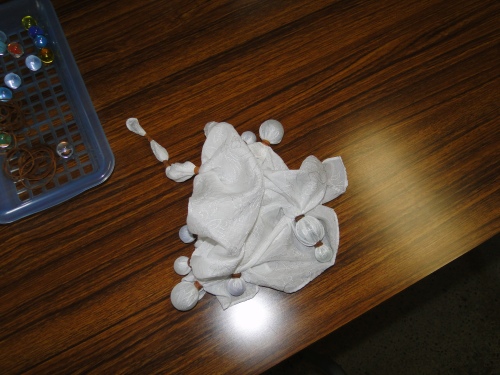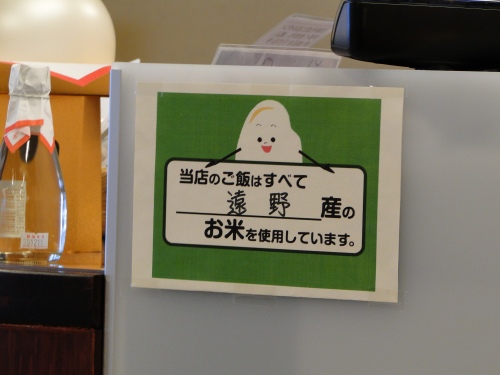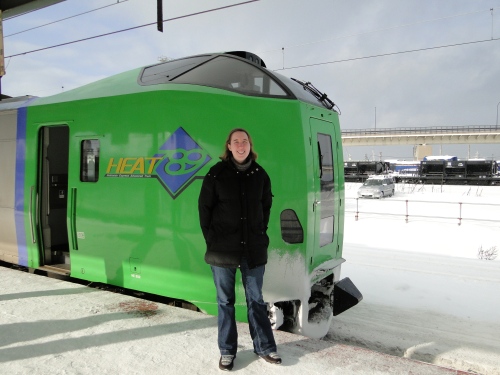Alright, Iwate, part two.
The day after we arrived in Morioka, we set off in the morning for Tono, based on two recommendations. First, from the guidebook my mother left here last May, which mentioned it as a center of traditional Japanese folklore. Second, from one of my coworkers, who had always wanted to go, partly because his family was originally from the area and partly due to the aforementioned folklore. Also because he apparently hasn’t been on a vacation since his older daughter was born (9+ years ago) and Tono is close enough that he might make it one day.
The train trip was easy enough – I meant to mention in the last post that we had purchased the Tohoku Free Pass for the trip. It was a very good deal, covering the round trip to the area in question and all train travel within Aomori, Akita, and Iwate. You only have to pay the shinkansen charge if you want to take the bullet train anywhere, rather than the full fare. Of course, we still managed to get into trouble – the train stopped at Hanamaki and we got off, assuming that we would need to transfer. Indeed we did – to the train we had just got off, which was switching lines and heading right for Tono. D’oh. Now I can check ‘held up a train’ off of my bingo card, thanks to the station agent who finally figured out what was going on.
The guidebook had made a lot of noise about how one really needed a car to get around Tono, since the bus system runs infrequently. We had decided to go anyway, because 1) there appeared to be enough to do within walking distance of the station and 2) the bus system couldn’t be that bad. Right?
Well, yes and no. We got lucky, arriving just before the one bus that morning that would take us to our chosen ‘out-of-town’ destination – Tono’s Furusato Village – and hopped on. I’d been to similar villages down south – a recreation of a traditional Japanese villages, with old houses, exhibits, and hands-on craft experiences, practically a Japanese Colonial Williamsburg.
Just a few problems, the biggest of which was Winter, with a capital W. It wasn’t snowing, but it was freezing, and even though the village was open for business, it was obviously the off season. Nobody else was there, and the ‘knowledgeable’ staff were mostly volunteers hiding in the houses with a warm fire and a radio. Alas. They were friendly though, and happy to mention what they did know and chat about the weather.
The other fail was on my head, for not reading the fine print (a theme for the two of us on this trip, as it turns out). The craft workshops were available by reservation only. Oops. We did find a dye workshop and were able to participate in that, using marbles and rubber bands to create traditional patterns.
We headed back to the main part of town in the early afternoon, freezing and crabby with hunger (‘hangry’, if you will). The folks at the tourism bureau were happy to direct us to various restaurants.
The town itself did turn out to be as walkable as the map we had gotten in Morioka suggested.The Tono Municipal Museum is less than ten minutes from the station and quite cool to see. Many of the legends are in English if you don’t speak/read Japanese. There was a great multi-media wall that you could touch to watch various interactions between actors in Tono a hundred years ago. For particular interest to the Japanese language learner was the use of the local dialect between the actors. There’s a large display based on a traditional Magariya (L-shaped house), with old appliances and children’s games. You can also use a listening station to hear villagers singing traditional songs and telling tales.
You can purchase discounted admission at the museum to enter both it and the Tono Castle Town Materials Museum. The materials museum is very small, but worth seeing for it’s old swords, kimono, and armor, plus a variety of small items like card games and tea implements
One of Tono’s main claims to fame is The Legends of Tono (or Tono Monogatari), a collection of tales told to a Tokyo scholar by a Tono storyteller back in 1910. The tourist bureau happened to be selling English translations, one of which I purchased. It’s an odd collection – the storyteller seems to have disgorged every odd or unusual tale he had ever heard about the area. There are creepy stories about Yama-haha, who eats a young girl and wears her skin to fool her parents (they are saved by their rooster, who has to drop some pretty heavy hints before they catch on), to more mundane ones about New Year’s traditions observed locally. Many of the tales about Yama-haha, Kappa, and Tengu were sufficiently hair-raising that I’m glad we went back to Morioka for the night. I don’t know if I could have slept in Tono!


















